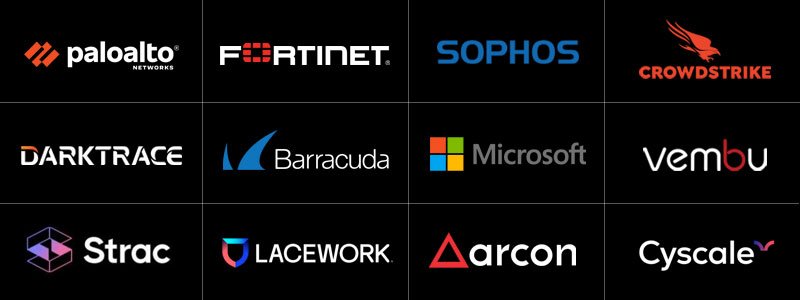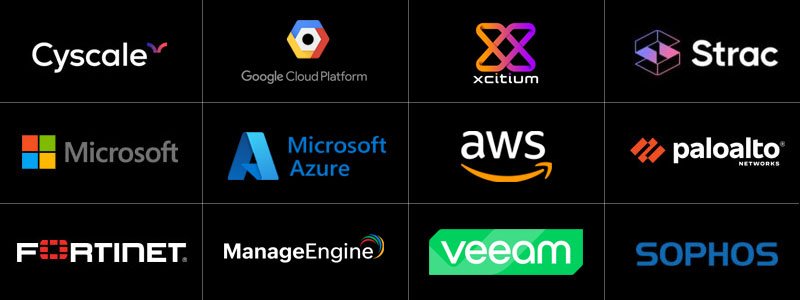IAM (Identity Access Management)
IAM (Identity Access Management)
WHAT IS
IAM (Identity Access Management)
As digiALERT, we use Amazon Web Services (AWS) Identity and Access Management (IAM) to control access to our AWS resources and ensure the security of our data and infrastructure.
When designing our IAM strategy, we start by creating a clear understanding of our different users, groups and their respective roles. We then use IAM policies to grant appropriate permissions to these groups, allowing them to access only the resources that they need to perform their specific tasks. We also make sure to use IAM roles for EC2 instances and Lambda functions, to provide the necessary permissions for our applications to access other resources.
When implementing our IAM strategy, we use the IAM console to create and manage users and groups, and assign permissions to them. Additionally, we use the AWS Single Sign-On (SSO) service to enable our users to access multiple AWS accounts and services with a single set of credentials. This makes it easier for our users to access the resources they need, while still maintaining a high level of security.
We also use multi-factor authentication (MFA) to add an extra layer of security to our accounts. By requiring users to provide a one-time code generated by an MFA device in addition to their password, we can ensure that only authorized individuals have access to our resources.
Speak to an expert
key features
IAM (Identity Access Management)
Types of
IAM (Identity Access Management)
As digiALERT, we use different types of IAM to control access to our AWS resources and ensure the security of our data and infrastructure.
-
Identity-based IAM: We use this type of IAM to create and manage users and groups, and assign permissions to them. It allows us to easily control access to different parts of our infrastructure.
-
Role-based IAM: We use this type of IAM to create roles with specific permissions and assign them to users and groups. This is particularly useful for our EC2 instances and Lambda functions, as it allows us to provide the necessary permissions for our applications to access other resources.
-
Federated IAM: We use this type of IAM to allow users to access AWS resources using existing identity information from external providers such as Microsoft Active Directory or Google G Suite. It is useful when we need to grant access to our resources to third-party services or external partners.
-
AWS Single Sign-On (SSO): We use this service to enable our users to access multiple AWS accounts and services with a single set of credentials. This makes it easier for our users to access the resources they need, while still maintaining a high level of security.
-
Compliance and Governance: We also use other services such as AWS Organizations, AWS Resource Access Manager, AWS Secrets Manager and AWS Identity Governance to enhance our security and compliance and have a better centralized management.
Statistics on
IAM (Identity Access Management)
Speak to an expert
what are the
IAM’s (Identity Access Management) we audit ?
1. Microsoft Azure Active Directory (AD): A cloud-based IAM solution that provides identity management and access control for cloud and on-premise applications.
2. Okta: A cloud-based IAM solution that provides identity management and single sign-on (SSO) for cloud and on-premise applications.
3. Amazon Web Services (AWS) IAM: A cloud-based IAM solution that provides identity management and access control for AWS services and applications.
4. Google Cloud Identity: A cloud-based IAM solution that provides identity management and access control for Google Cloud services and applications.
5. IBM Cloud Identity: A cloud-based IAM solution that provides identity management and access control for IBM Cloud services and applications.
6. OneLogin: A cloud-based IAM solution that provides identity management and single sign-on (SSO) for cloud and on-premise applications.
7. Auth0: A cloud-based IAM solution that provides identity management and access control for cloud and on-premise applications.
8. CA Single Sign-On (SSO): An on-premise IAM solution that provides identity management and single sign-on (SSO) for on-premise applications.
9. Oracle Identity Manager (OIM): An on-premise IAM solution that provides identity management and access control for on-premise applications.
10. Ping Identity: A cloud-based IAM solution that provides identity management and single sign-on (SSO) for cloud and on-premise applications.
These IAM solutions provide organizations with the necessary tools to manage user identities and access privileges, ensuring that sensitive systems and data are protected from unauthorized access.
How do we do
IAM (Identity Access Management)
-
Design: We start by creating a clear understanding of our different users, groups, and their respective roles. We use IAM policies to grant appropriate permissions to these groups, allowing them to access only the resources that they need to perform their specific tasks. We also make sure to use IAM roles for EC2 instances and Lambda functions.
-
Implementation: We use the IAM console to create and manage users and groups, and assign permissions to them. We also use the AWS Single Sign-On (SSO) service to enable our users to access multiple AWS accounts and services with a single set of credentials.
-
Configuration: We use multi-factor authentication (MFA) to add an extra layer of security to our accounts. We also use other services such as AWS Organizations, AWS Resource Access Manager, AWS Secrets Manager, and AWS Identity Governance to enhance our security and compliance.
-
Product Integration: We integrate IAM with other AWS services such as S3, EC2, RDS, and others, to control access to these services.
-
SSO: We use SSO service to enable our users to access multiple AWS accounts and services with a single set of credentials.
-
MFA: We use MFA to add an extra layer of security to our accounts by requiring users to provide a one-time code generated by an MFA device in addition to their password.
WHY IAM (Identity Access Management)
WHO NEEDS IAM (Identity Access Management)
IAM, or Identity and Access Management, is a set of security practices that are used to control access to resources within an organization. These resources can include data, applications, and infrastructure. IAM is used to ensure that only authorized users are able to access these resources and that they can only perform the actions that they are authorized to do.
IAM is important for organizations of all sizes, as it helps to protect sensitive information and resources from unauthorized access. This is particularly important in today's digital landscape, where cyber threats are becoming increasingly sophisticated and data breaches can have severe consequences.
IAM can be used to control access to resources across a wide range of platforms and environments, including on-premises, cloud-based, and hybrid environments. It is also used to manage access to resources across different levels of an organization, including access for employees, partners, and customers.
How often IAM (Identity Access Management) recommended
When it would be performed
IAM is a continuous process that should be performed on an ongoing basis in order to ensure the security and integrity of an organization's resources. It is important to regularly review and update access controls to ensure that they are still appropriate and effective.
Some specific actions that should be performed as part of an IAM process include:
- Regularly reviewing and revoking access for users who no longer need it, such as employees who have left the company or contractors who have completed their work.
- Reviewing and updating role-based access controls (RBAC) to ensure that users only have access to the resources they need to perform their job duties.
- Monitoring for suspicious activity and quickly revoking access for users who are found to be acting maliciously.
- Conducting regular security audits to ensure that the organization's IAM policies and procedures are still effective and aligned with industry best practices.
- Reviewing access controls for compliance with regulatory requirements such as HIPAA and PCI DSS
Speak to an expert
How are we
unique
As a vendor in the IAM space, digiALERT differentiates itself from other vendors in several key ways:
-
Comprehensive and integrated solution: We provide both access control and user behavior analytics in a single platform, making it easier for organizations to gain a holistic view of their IAM posture.
-
Ease of use and automation: Our IAM solution is designed to be simple to use and easy to deploy, with a focus on automating repetitive tasks and reducing the need for manual intervention.
-
High level of customization: Our solution is built on a flexible architecture that allows us to easily adapt to the unique needs of different organizations.
-
Outstanding customer service: We have a team of experienced and knowledgeable IAM experts who are available to provide support and guidance throughout the entire implementation process, and beyond.
-
Proven track record: We have a proven track record of delivering successful IAM solutions to a wide range of organizations, across various industries.
-
Scalability and flexibility: Our IAM solution is built to be scalable and flexible, allowing it to grow as your business grows and adapt to the changing needs of your organization
-
Competitive pricing: We offer competitive pricing for our IAM solution, providing high-quality and comprehensive services at an affordable cost.













 ISO/IEC 27001:2022
ISO/IEC 27001:2022 ISO/IEC 27001:2022
ISO/IEC 27001:2022 ISO/IEC 20543:2019
ISO/IEC 20543:2019 ISO/IEC/IEEE 29119-5:2024
ISO/IEC/IEEE 29119-5:2024 CSA Certificate
CSA Certificate Incorporation
Incorporation Makeinindia
Makeinindia Authorized partner
Authorized partner MSME Chennai
MSME Chennai digiALERT Tan
digiALERT Tan GST Chennai
GST Chennai Pancard
Pancard Amended GST
Amended GST